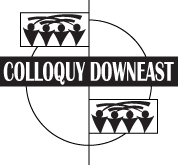How to Understand a Piece of Music
| |||||||
Are you a little intimidated by the notion of written music? A musical score doesn’t have to be intimidating, and one doesn’t have to be able to perform a piece in order to gain insights into it.
We’ll cover enough of the basics of music notation to provide a framework for reading music.
Then we’ll examine what we can learn just from looking at the first page of score, and then explore the relationship between what we see and what we hear.
We’ll investigate a number of movements, each by a different composer, and look into each composer’s life and work, culminating in a discussion of what might make a particular composer’s work unique.
Priscilla Hayes Taylor is the creator, cellist, programmer, researcher, and artistic director of Decompression Chamber Music. She is a member of the Plymouth Philharmonic Orchestra and Symphony New Hampshire. Ms. Taylor has a MM in Cello Performance from New England Conservatory, and a BA in Music Performance and Composition from Bennington College, and spent five summers at Kneisel Hall. Ms Taylor currently teaches for Upbeat New Hampshire and at UMassBoston.
Syllabus/Reading
We will be listening as well as reading.
Session 1: The Basics
Prep: spend some time on Music Theory.net: the link:
https://www.musictheory.net/lessons.
Additions and clarifications to musictheory
Bring any questions you have about the first twenty lessons, up through “Seventh Chords”. (They’re pretty short.) We don’t want the discussion to get too technical, just need to have the basic language and symbols available. (We will not be delving into complex harmony or analysis, just looking at the big picture.)
ALSO: choose a favorite piece of music and send me the Title, the Composer and the movement, if applicable. I will find the first page, if possible. (If everyone picks Mozart, I’ll probably ask you to make a second choice!)
What can you tell from looking at the first page of any score? We’ll start with a Bach Invention, Ravel’s “Bolero”, Abreu’s “Tico Tico” Brahms’ double concerto, and a string quartet TBD.
Session 2: Comparing and Interpreting what you see and what you hear.
Prep: Review everything you know about your piece from the first page, and note anything that’s interesting, apparent, or confusing.
We will listen to as many of your selections as we can.
What can you see? Can you hear what you see? Can you see what you hear?What’s different?
Constructing and using your scale tool
IF you are remote please print out and cut out your scale tool. If you are in person I will provide you with one. Also bring any questions you have about what we’ve covered so far.
We’ll start with the scale tool, then Beth will guide us through the first page of Chopin’s “Raindrop” Prelude listening:
Chopin Raindrop
https://www.youtube.com/watch?v=LnxiRjzB6S4 –played by Vladimir Horowitz
www.youtube.com/watch?v=R2d2spnXyLA –played by Lang Lang
After that we can tackle Bolero, Tico Tico, and/or Bach Invention
Tico Tico you can listen to it here, www.google.com/search?client=firefox-b-1-e&q=https+%2F%2Ftico+tico+choro.com#fpstate=ive&vld=cid:be98cf4a,vid:uzZnXxkuD2U,st:0
but the most authentic-sounding version is on the Wikipedia page for Choro. en.wikipedia.org/wiki/Choro
scroll down the sidebar to Tico-Tico no Fubá, Recorded 1931 by Orquesta Colbaz
Bach Invention
Three very different versions:
Andras Schiff —www.youtube.com/watch?v=3lk1REA_IsQ
Tsvi Erez —www.youtube.com/watch?v=uz6KfokGdwE
Glenn Gould —www.youtube.com/watch?v=oVGgrsPCwKw
Session 3: The Composer
Prep: Find out some things about your composer – dates, style, works, etc. Then pick one other piece by the same composer in a different genre – if your original pick was a piano piece, you could pick a string quartet or a symphony, for example. See if you can figure out what is the composer trying to convey. What can you anticipate will happen in the rest of the piece or movement?
We can then discuss what we see and what we hear: tension vs relaxation, overall mood;, also what in the piece causes excitement or serenity.
Session 4: Quirks
Prep: Identify one “genius moment” in your piece: something inexplicably wonderful, gut-wrenching or startling. Can that moment characterize your composer? Is there another work or composer that you love or can’t stand?
Elgar Cello Concerto
KARIDOYANES Score Scan-ELGAR Cello Concerto pp 30 and 48
www.youtube.com/watch?v=unJrglj1460 (second movement) beginning at 1:55
www.youtube.com/watch?v=vzgeaqKTr3Y (third movement) starting at 0:00
Bach/Marcello
Notes from Amy Archer: A Neophyte’s Bach Handout
I feel the musician captures most closely the feeling of why I fell in love with this piece. It’s a staged street scene but I love it. (Amy Archer) https://youtu.be/Ra3I4iYvB9I?si=IhQKGJo4cgdN6C-2
also: IMSLP recording. – imslp.org/wiki/Oboe_Concerto_in_D_minor,_S.Z799_(Marcello,_Alessandro) scroll down to “For Keyboard (Bach)”
There are three recordings and I think the Luis Kolodin version is the most musical, especially in his treatment of the repeated notes and the ornaments.
Original Marcello version – https://www.youtube.com/watch?v=vE2O_yfgtBU
original Oboe Concerto for oboe, strings, and continuo.
Ravel – Bolero
Background: Ravel’s Boléro
Michael Taylor Notes on Bolero : Bolero Notes – Michael Taylor
L’Orchestre National de France, Dalia Stasevka conducting — www.youtube.com/watch?v=gg1TDKBSRvg –turn up the volume enough that you can hear the snare drum at the beginning (you can turn it back down as things thicken up)
Pink Martini arr. of Bolero – Pink Martini arr Bolero – 2011
Debussy – “L’Apres-Midi d’un faune”
recording: www.youtube.com/watch?v=Y9iDOt2WbjY
Poem : Stephane Mallarme – L’Apres- Midi d’un Faune
Elgar Cello Concerto
KARIDOYANES Score Scan-ELGAR Cello Concerto pp 30 and 48
▼ Registration
Registration
Bookings are now closed (or the colloquy has been cancelled)
We aren't currently accepting bookings for How to Understand a Piece of Music.
If you are trying to pay for a colloquy that you've already attended or have questions about refunds, please contact our Treasurer to work out the details.
▲ Hide...


